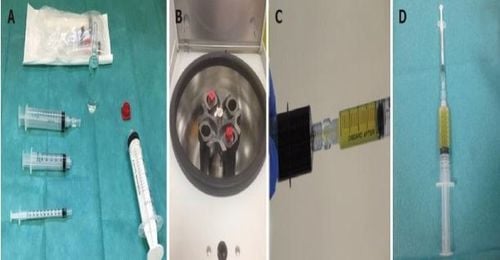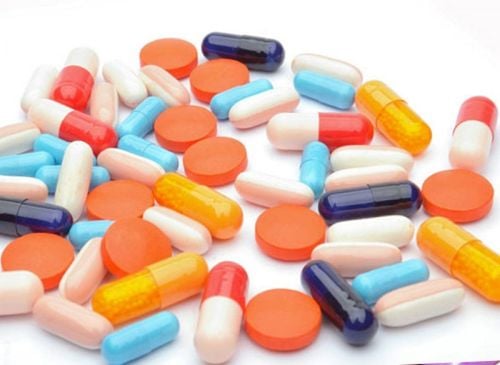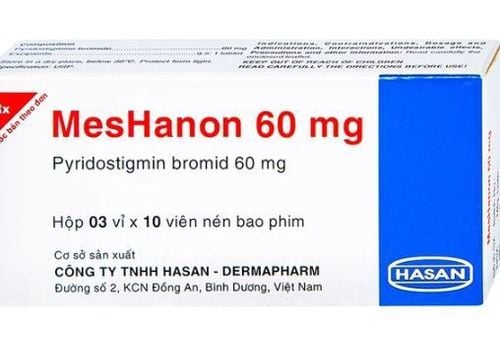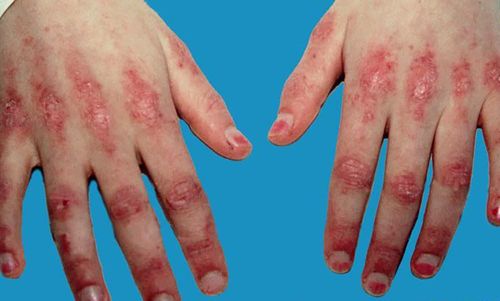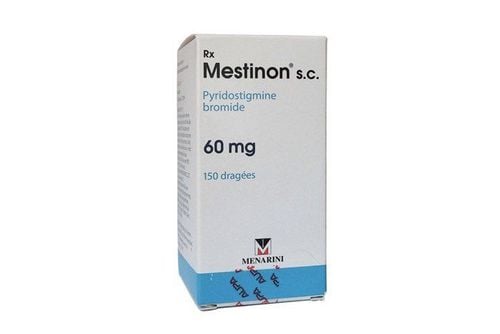This is an automatically translated article.
Posted by Master, Doctor Le Thai Bao - ICU Doctor - Intensive Care Department - Inmec Times City International Hospital
1. What is myasthenia gravis?
Myasthenia Gravis is a chronic neuromuscular disease characterized by muscle weakness occurring intermittently or continuously with varying degrees of severity. The most commonly affected muscle groups are the striated muscles, which function at will in the body such as the facial muscles, eye muscles, chewing muscles, extremities, and respiratory muscles. Severe myasthenia gravis can cause paralysis of the respiratory muscles and death from respiratory failure. Myasthenia gravis is classified as an autoimmune disease due to the presence of autoantibodies against acetylcholine receptors on cell membranes at postsynaptic neuromuscular junctions.2. What is plasma exchange technique?
Plasma exchange (PEX) is a technical method using a filter to remove a part of plasma and plasma substances such as: autoimmune antibodies, immune complexes, cryoglobulins, substances attached to the plasma. proteins, endotoxins, exotoxins, bilirubin, triglycerides, drugs or toxins circulating in the blood plasma,...
Some of these substances are eliminated along with the patient's plasma and a small amount of blood New equivalent is infused back with the same volume. Therefore, improving the condition of the patient and helping the patient recover quickly. Plasma can be replaced with fresh frozen plasma (fresh frozen plasma) or with 5% Albumin.
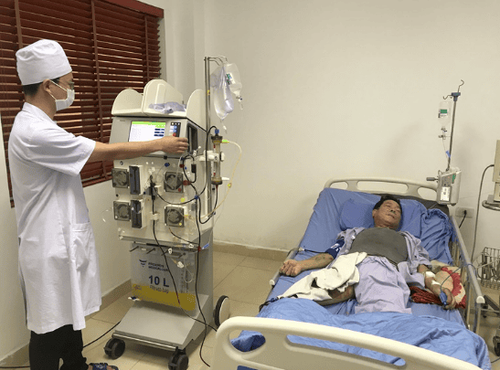
3. Indications and contraindications for plasma exchange in the treatment of myasthenia gravis
3.1 Indications for plasma exchange in the treatment of myasthenia gravis
Patients with myasthenia gravis have severe signs (swallowing disorders, difficulty speaking, respiratory muscle paralysis) that do not respond to drugs to treat myasthenia gravis. The time between PEX times (daily or every other day), the number of PEX times from 3 to 8 times (average 4 - 6 times) according to the patient's response.
3.2. Contraindications to plasma exchange in the treatment of myasthenia gravis
Contraindicated in plasma exchange in the treatment of myasthenia gravis with the following cases:
Severe shock without raising mean blood pressure > 55 mmHg by measures, fluids and vasopressors. Progressive bleeding. Severe coagulopathy, disseminated intravascular coagulation. The patient is severely allergic to the replacement fluids.
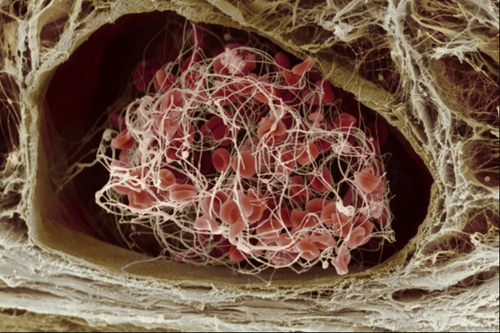
4. How to calculate the volume of plasma to be replaced
The volume of replacement fluid for 1 unit volume of PEX is calculated by the formula:
V of substitution = (1-Hct)x(0.065 x Wkg)
Or an estimate of 40ml/Kg/time for 1 volume unit to replace. In the first 3 times, the displacement volume was 1.5 times the replacement volume unit, the following times 1.0 times the replacement volume unit.
5. Medicines and first aid equipment needed in plasma exchange
5.1. Drugs required in plasma exchange
Anticoagulation Heparin: as indicated for each patient calcium chloride 2gram (1gram intravenously after entering PEX 30 minutes and right before the end of PEX 30 minutes). Methylpresnisolone 80mg intravenously 30 minutes before PEX for the purpose of preventing allergic reactions.
5.2 First aid equipment to prepare
Endotracheal intubation set Anaphylactic shock equipment Ambu ball, oxygen system Monitor monitor vital functions: heart rate, SpO2, breathing rate, blood pressure.

6. Steps to prepare and conduct plasma replacement therapy for myasthenia gravis
6.1 Prepare the patient
Explain to the patient, the patient's family the benefits and side effects of PEX. Accordingly, the patient lies on his back with his head raised 300 (if there is no hypotension). The leg on the side of the venous catheter: straightened and rotated outward. If internal jugular vein is placed: head flat, face turned to the opposite side. Check medical records and check anticoagulation protocol (risk classification and anticoagulation according to protocol)
6.2 Steps to take
Establish extracorporeal circulation. Turn on the power, select the ―PEX‖ treatment method, then install a membrane filter and blood line according to the instructions on the plasma dialysis machine. Expel the gas present in the filter membrane and conductor, usually using 0.9% sodium chloride solution with 5000UI/1000ml heparin phase. Check the entire safety system of the extracorporeal circulation (locks, connectors of the machine). Connect the extracorporeal circulation to the patient Connect the blood line (red catheter) to the extracorporeal circulation, open the blood pump at a speed of about 60-70 ml/min, inject the first dose of heparin 20 units/kg and then maintain maintain heparin 10 units/kg/hour, when the blood reaches 1/3 of the first filter, stop pumping and connect the extracorporeal circulation to the venous line (blue catheter) and gradually increase the blood rate up to about 80 -100 ml/min.
Set the parameters for the machine to work:
Blood flow about 80-100 ml/min (depending on blood pressure) Initial dose of heparin 20 units/kg, maintenance dose 10 units/kg/hour (with caution and Adjust dose in patients with coagulopathy). Volume of plasma to be removed: equivalent to volume of replacement fluid. Warm plasma or replacement fluid at 37°C. After performing PEX, the two venous catheters must be washed with 0.9% NaCl and then injected into each side 12,500 units of heparin in order to avoid clogging the venous catheters to save for the next filtration. It is necessary to thoroughly disinfect the catheter with betadine solution, then cover it with a bandage.
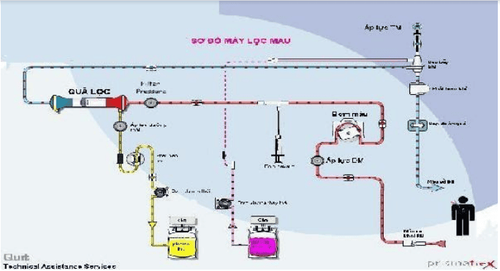
7. Monitoring during plasma filtration
Consciousness, pulse, temperature, blood pressure, breathing rate, SpO2. Ventilator parameters. (if patient is on ventilator) Allergic reactions: rash, urticaria, difficulty breathing, anaphylaxis. Bleeding complications: bleeding under the skin, mucous membranes, gastrointestinal tract, respiratory tract, brain, foot intravenous catheter. Check the dose of heparin. Monitor the parameters on the plasma dialysis machine
Arterial pressure (pressure into the machine). Intravenous pressure (pressure returning to the patient). Pre-membrane pressure. Transmembrane pressure.

8. Management of plasma exchange events
When performing plasma replacement, patients may experience complications. Therefore, to ensure the health of the patient, it is necessary to handle as follows:
Allergies: Dimedron 10 mg intramuscularly Anaphylaxis: It is imperative to stop the PEX process. Administer adrenaline 1/3 IV syringe, repeat if necessary until SBP >90 mmHg Coagulation of membrane and air trap, membrane rupture: stop dialysis Intravenous catheter occlusion or failure: reposition venous catheter Air in Extracorporeal circulation: reduce blood speed, use a syringe to suck air in the atmosphere. Bleeding: Rare because of the short duration of PEX (about 2 hours), detectable only on laboratory tests. The duration of the effect of heperin is 6 hours, so there is no clinical manifestation of bleeding. In case of infection, the catheter site will appear red and pus-filled. At this time, it is necessary to withdraw and implant the venous catheter tip, intracatheter blood culture and peripheral blood culture. If bacteremia occurs, then the blood culture will contain bacteria, at this time it is necessary to use antibiotics according to the results of the antibiogram.
Vinmec International General Hospital applies the plasma exchange technique with a success rate of up to 95%. The hospital uses the Prismaflex® plasma exchange system made by experienced doctors in the Emergency Department.
Through partial removal of plasma, a large amount of autoantibodies, immune complexes, blood lipid components, toxins bound to plasma components are eliminated for therapeutic use. related diseases.
Please dial HOTLINE for more information or register for an appointment HERE. Download MyVinmec app to make appointments faster and to manage your bookings easily.





